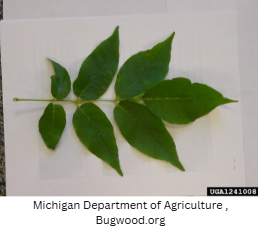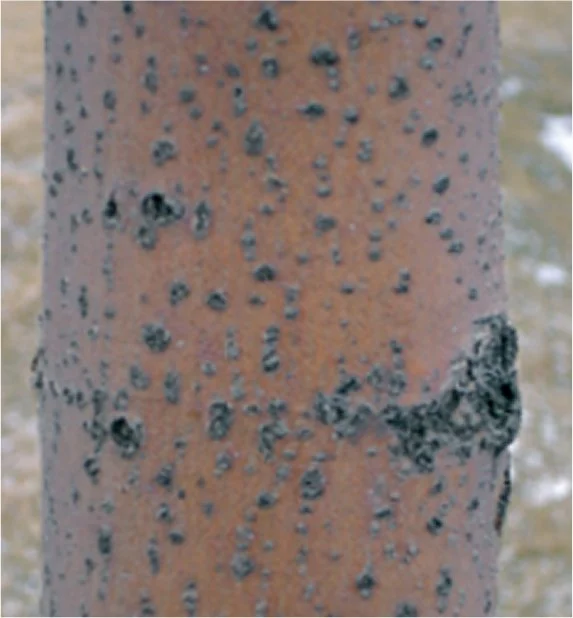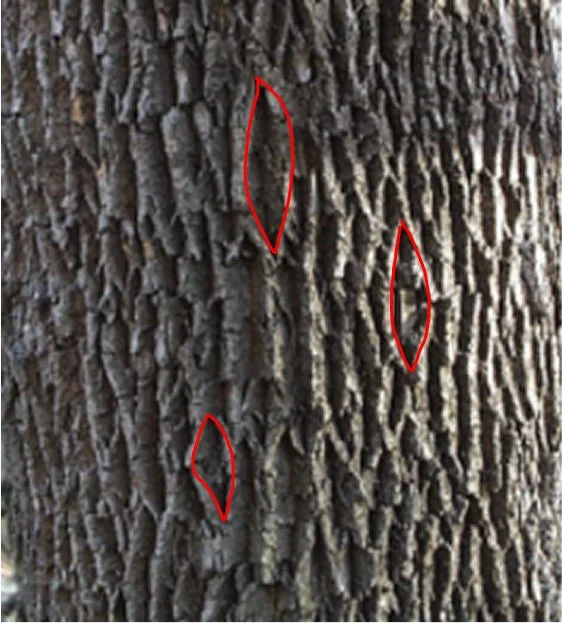
Ash Tree Identification
Identifying ash trees is the first step in monitoring for signs and symptoms of EAB. All ash species are vulnerable to EAB infestations.
Below are important features that can help identify ash trees in your neighbourhood.
Leaves: ash leaves are pinnately compound: having their own stalk (petiolule) with multiple tiny leaves (leaflets) attached.
Bark: younger trees will have a smooth texture (left) and will be a light-rust brown colour. Mature trees will have a rough, ridged texture with diamond patterns (right) between the ridges and will be a light grey colour.
Twig and branch arrangement: ash tree twigs and branches grow directly opposite from one another.
Seeds: ash tree seeds, called samaras, hang in clusters, are light green then become light brown. They look like a canoe paddle.
Trees that could be mistaken for ash
The Butternut tree, Juglans cinerea is one of them. It’s common name is White walnut.
The butternut tree has similar leaf appearance but produces large edible fruit and has an alternate twig/branching structure.
This tree is unaffected by EAB infestations.
Another tree that shares similar leaf appearance are the Mountain ash tree varieties, Sorbus spp.
Mountain ash trees produce clusters of small berries that range in colour from bright red, orange, and yellow. It has an alternate twig/branching structure.
This tree is unaffected by EAB infestations.







